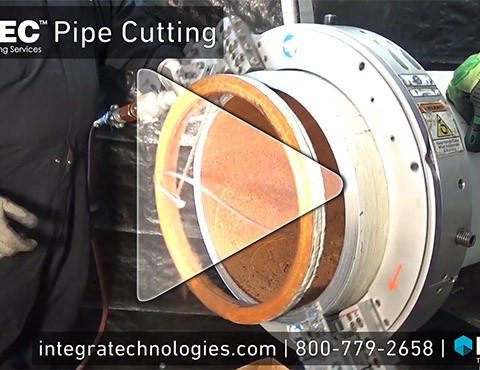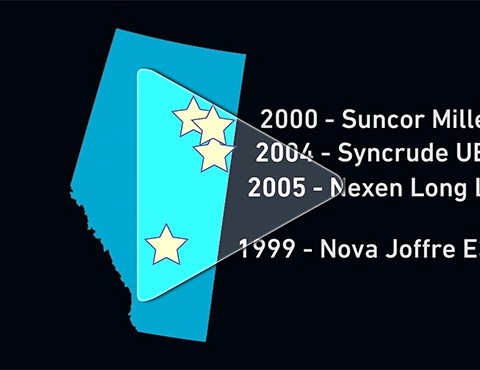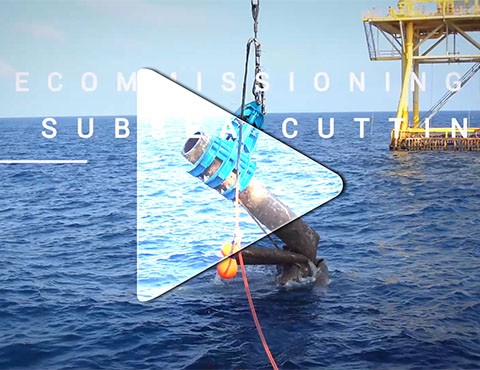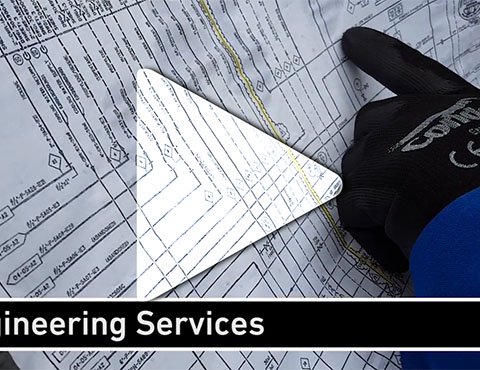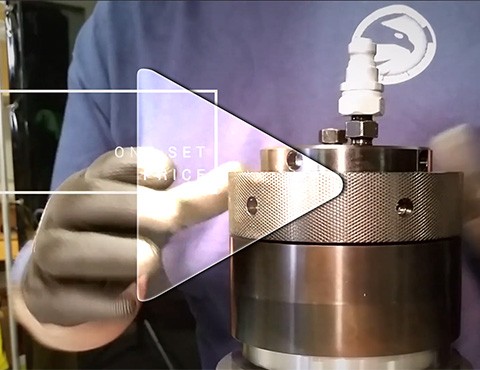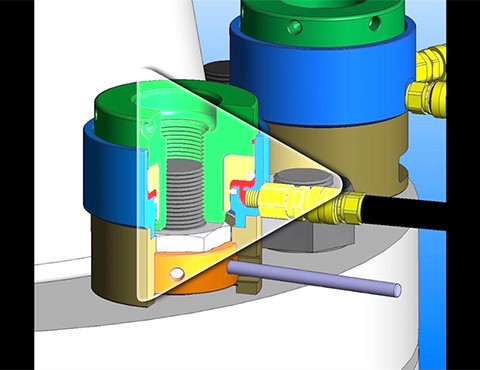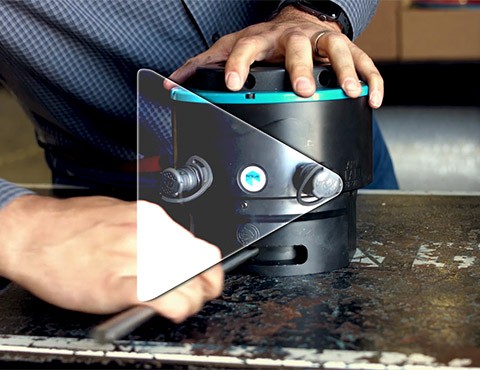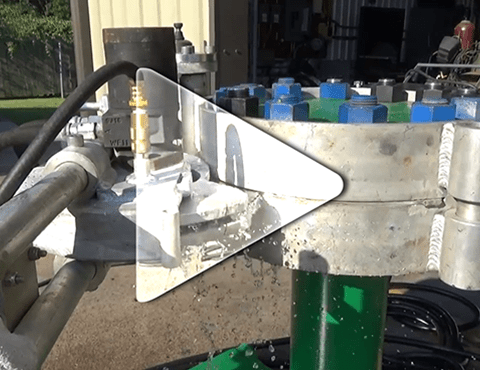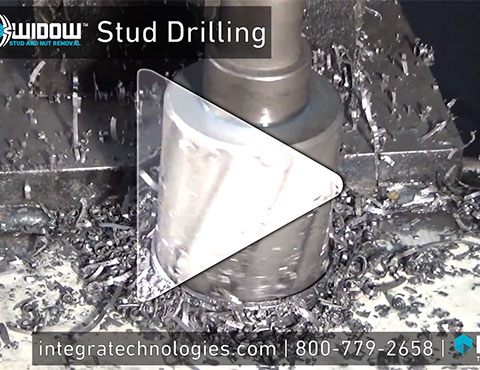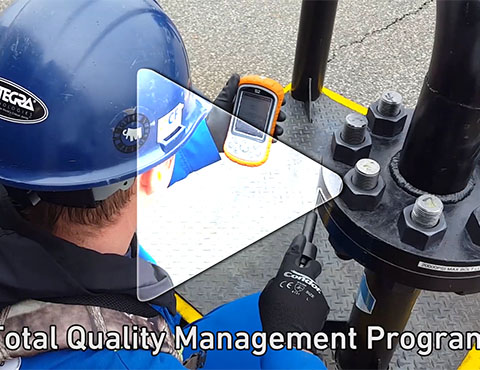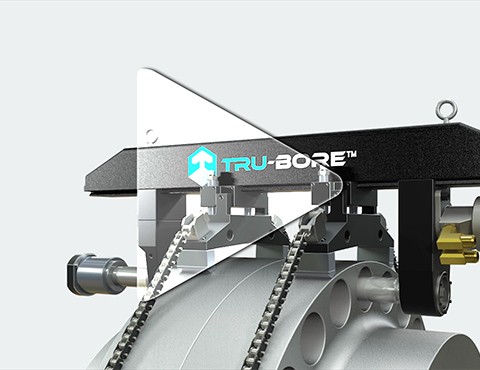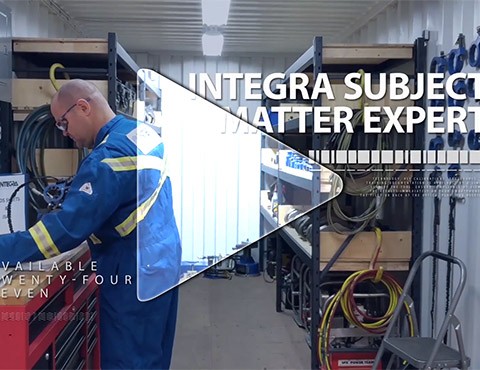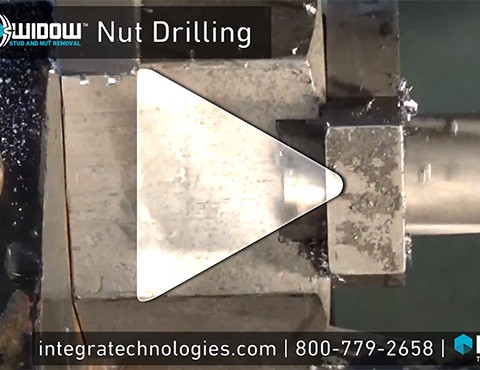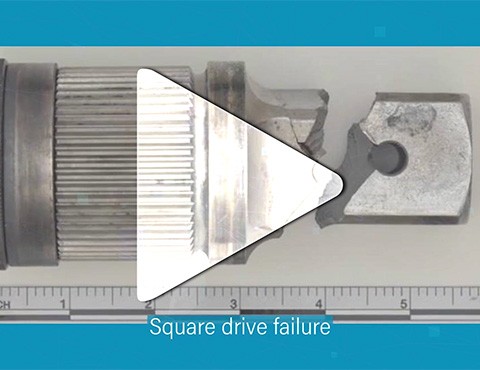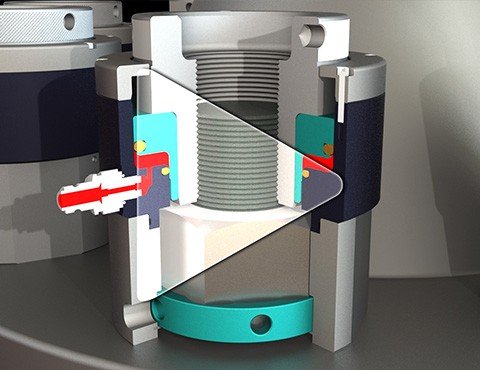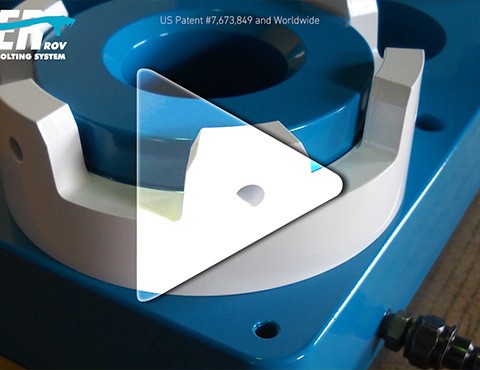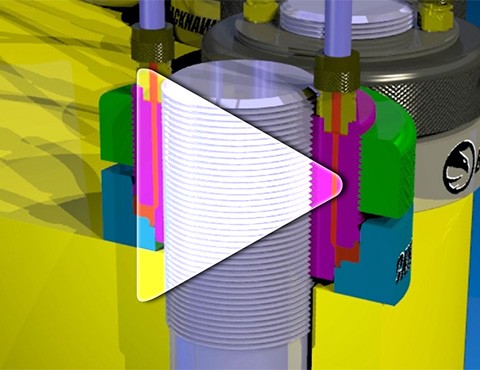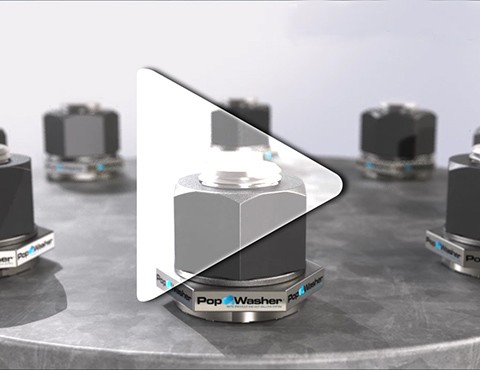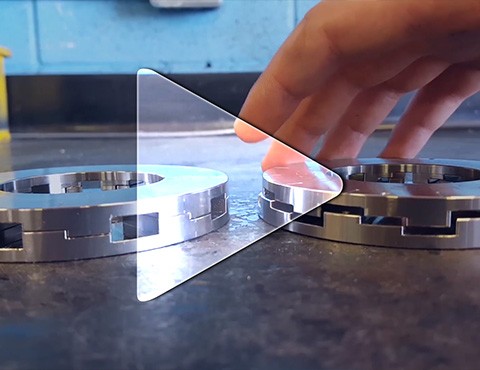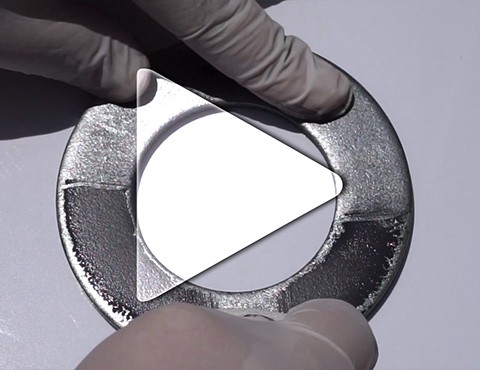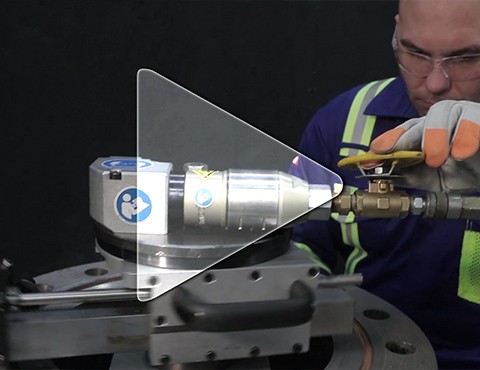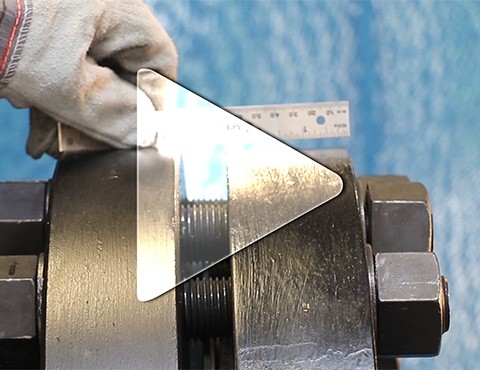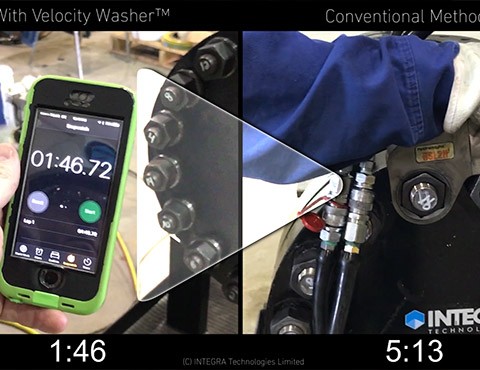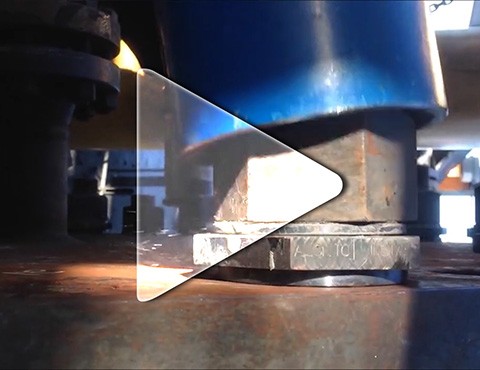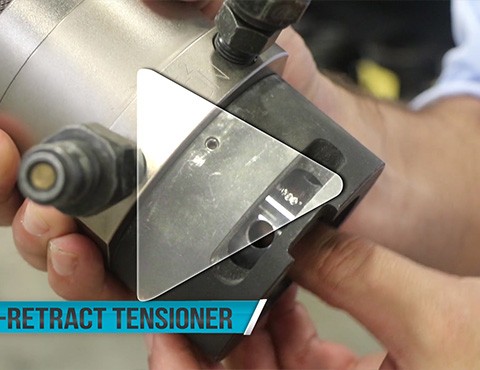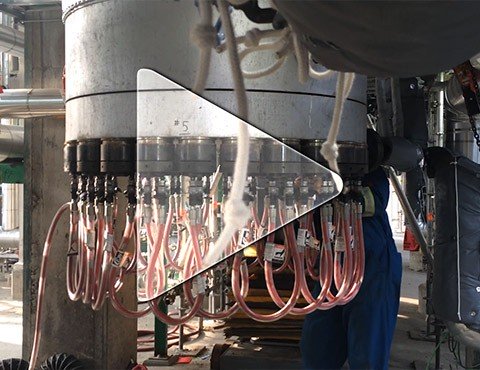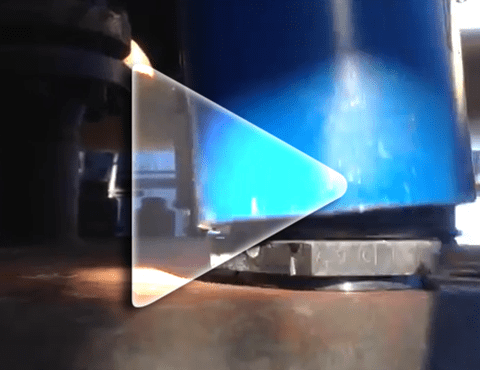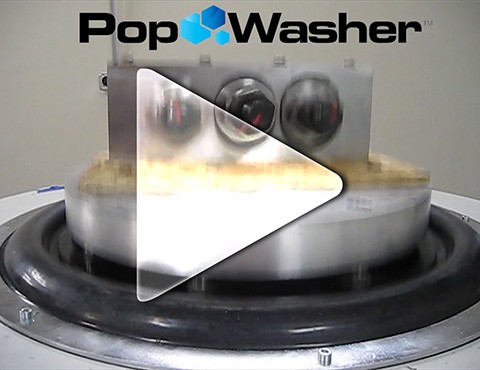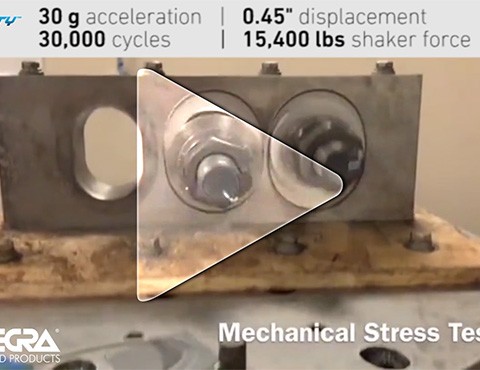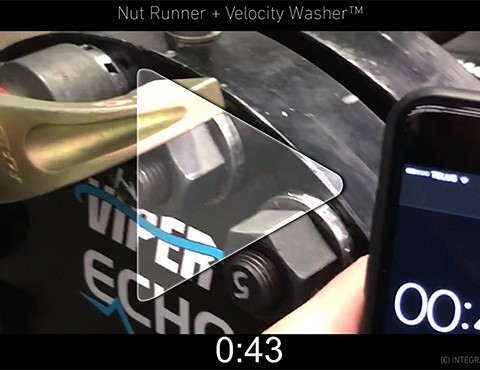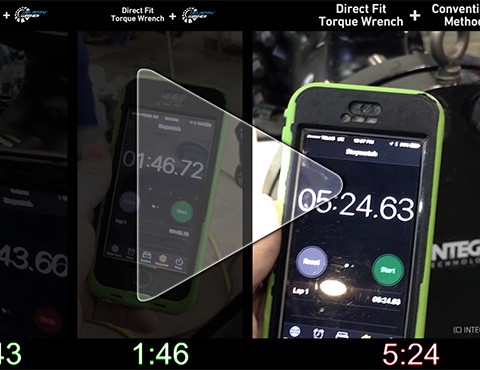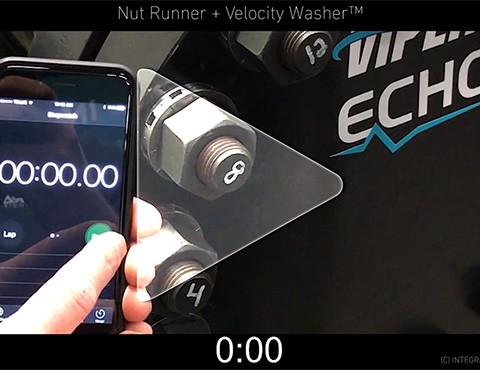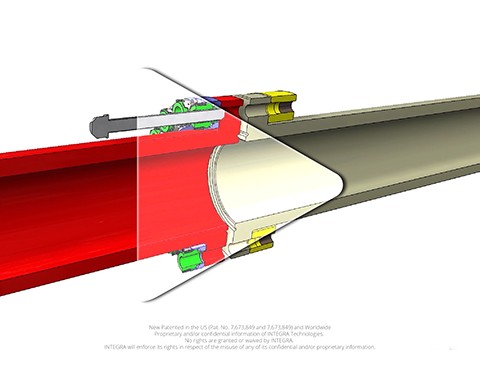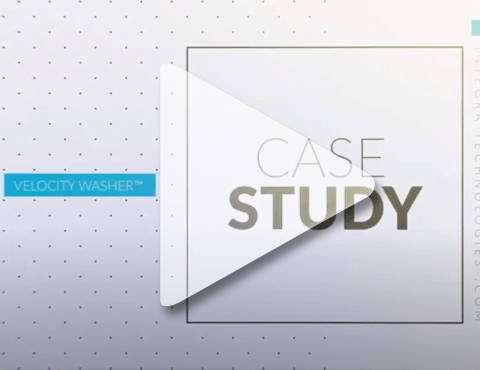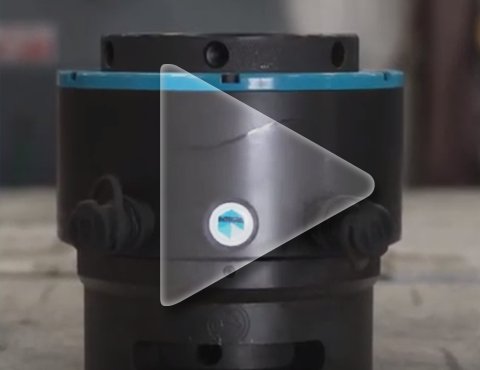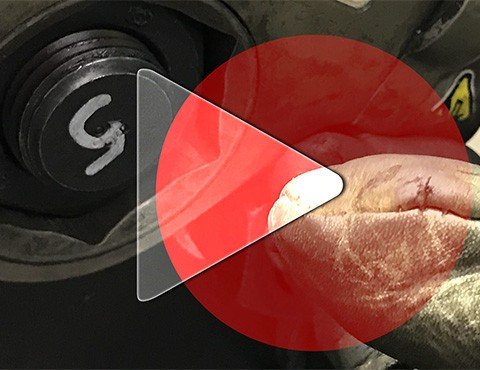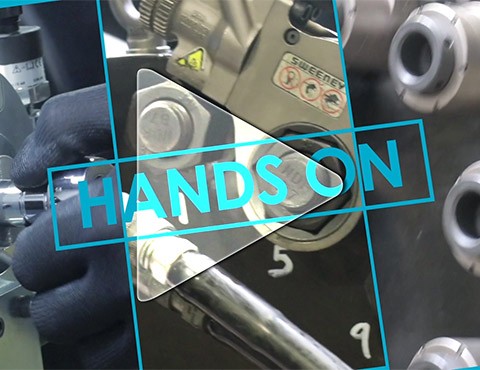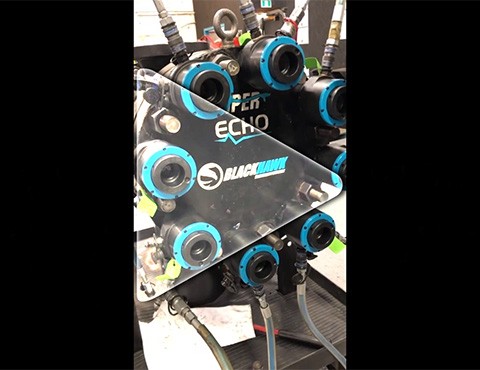“Hi I’m Mark Johnson, Technical Services Manager at INTEGRA Technologies. I’m here to talk today about the Talon™ ART. That’s our Automatic Retract Tensioner.
I’m going to be talking about three things in this video, the first is high-temperature tensioning, the second are the safety aspects of the tool, and the third is how the spring retract design works.
So we’ve got a lot of history working with end-users tensioning at high temperatures. So here at INTEGRA we’ve pioneered the method of hot-tensioning up to four hundred degrees.
Our seals inside the tool can take it. There are some considerations you need to be aware of that we’ve worked with them to overcome; which is the hoses and the connections within it. We’ve developed with multiple end-users procedures to safely do this with the operators at temperatures up to 400 degrees.
With respect to safety, we had that in mind at the forefront when we came to design these tools. There are differences between tensioners on the market and there’s a difference with our Talon™ with respect to safety. In the event of an outer seal failure mode these tools were designed so that the operator will never see oil. The oil-release is fully contained within the cap of the body.
With respect to the outer seal in particular, other tools on the market, if the outer seal fails the oil can be released directly-to-atmosphere and thereby hitting the operator.
There are two points to safety of the inner seal. First one is over stroke and the second one is just a simple failure of the seal.
With respect to over-stroke, we have a stroke indicator on the tool that shows the operator when the tool has become over-stroked and they know to go back down to zero-stroke. If for some reason the operator does go past that point, the tool is designed to leak out at a designated point which is away from the operator and the operator never sees the oil release.
With respect to the inner seal failing on its own, it fails internally and contained within the bridge, again the operator never seeing oil. There is no failure-mode on this tool in which the operator will see oil hitting his body.
Another safety-feature we added into the Talon™ was the encapsulated socket. It may seem like a small design-feature but it’s important to us. We found in the past with old tensioners you had a socket that was a third piece that was a standalone-piece. You put that on the nut then you put the tensioner on then you put the puller on. The issue is however that socket not only got lost during jobs and delayed it but it also was a drop-hazard at height. So, you’re on top of reactor or up on an exchanger on the ledge of any kind: this becomes a drop hazard. This again, seems like a small issue but it caused big problems in the past. We circumvented this in the design of our tool by encapsulating the socket, meaning it is in the piece as a whole and can’t come out.
What is automatic retract tensioner mean? That means we’ve got a spring installed here that’s gonna push the piston back to zero-stroke. So, with tensioning you stretch the stud. Once you stretch the stud using hydraulic pressure you come along and lock down the load with the socket. Once that’s finished, you turn the pump off and let go of load and you’re done! However, with other tensions on the market that aren’t auto-retract, you’ve got this stroke stuck in the piston and the operator has to actually use this tommy-bar to push down that stroke manually for each one of these around the flange which takes a lot of time and adds fatigue to the user.
So what we’ve done is added a spring inside of the head, which means the operator once he had locked down the load with a socket, comes along, opens up the pump-valve, sits back in every single piston on that flange gets pushed back to zero-stroke, which means they can then turn the pump off, take the tools off and go to the next job. This automatic retracting piston decreases the fatigue on the operators do they don’t have to push the pullers back and increases the speed of the job as a whole.
Thanks for watching if you have any questions give us a call.”
SERVICES
HOW IT WORKS
PRINCIPLES OF JOINT INTEGRITY
ENGINEERED PRODUCTS
SAFETY
TRAINING
Get A Quote Today
One of our experts will be in touch within 24 hours to provide a free quote and advice.

